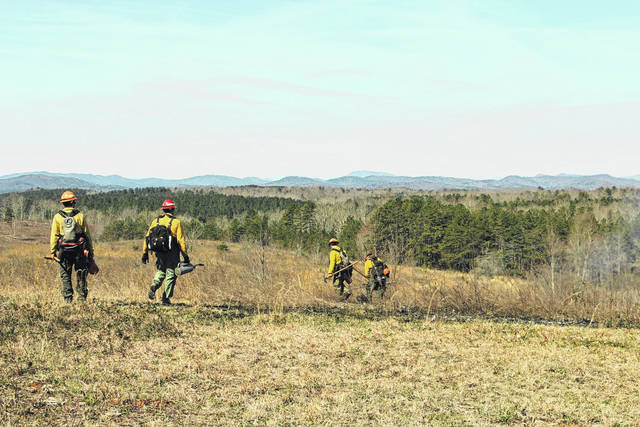PICKENS COUNTY — Frequent prescribed fires in southeastern forests can help prevent raging wildfires like those that have engulfed much of Northern California, a Clemson University researcher says.
The Mendocino Complex fire, the largest wildfire Northern California has ever seen, is being fueled by dead leaves, tree branches and other debris that have accumulated on forest floors. Prescribed burning can lessen the chance of conflagration by decreasing flammable material on the forest floor, according to forest ecology professor Don Hagan.
Hagan is studying the role of fire in the Appalachian Mountains and is part of a team bringing prescribed burning back to the region.
“Prescribed burning involves using fire to control pest insects and diseases, provide forage, improve habitats for wildlife and put nutrients back into the soil, as well as promote the growth of trees, wildflowers and other plants,” Hagan said. “Prescribed burning also reduces hazardous fuel accumulations, which helps reduce the risk of future catastrophic wildfires. Fire is important for healthy forests.”
Fire behavior is affected by the amount of fuel available and weather conditions in an area. Hot, dry weather dehydrates vegetation and makes it more flammable. In Northern California, a drier than normal rainy season has led to drier than normal fuels and soil, and the result is devastating fires that are difficult to contain.
Experts believe fire has been around since the beginning of the Paleozoic Era, 540 million years ago, when there was enough oxygen in the atmosphere to support fire. A history of prescribed fire in North American forests shows fires ignited by lightning or Native Americans were once used to shape many North American ecosystems. Native Americans used fire for clearing land, hunting and gathering activities, as well as in warfare.
Then fire began to be suppressed in the Appalachians during much of the 20th century, causing the ecosystem to change. Hagan believes a fire regime consisting of prescribed burns to reduce fuel loads in the mountains could help restore fire-dependent ecosystems.
“Recent studies have shown that fires occurred as often as every five years in some locations in the southern Appalachians,” Hagan said. “There also is evidence — from things such as pollen and charcoal — that fire-adapted plant species predominated across large areas because of frequent fires. Fire is a natural process that is needed to keep forests clean and reduce the probability of wildfires.”
In forests where not enough fire has occurred, non fire-adapted vegetation may take over, and wildfires can kill virtually every tree seedling. However, frequent prescribed burns can help forest vegetation become adapted to fires. Some fire-adapted vegetation, known as pyrophytes or pyrophitic plants, actually need fire for their seeds to sprout. One example in the Appalachians is the Table Mountain pine.
“The Table Mountain pine has serotinous cones that only open when heated,” Hagan said. “After fires move through forests, the cones open and seeds are distributed by winds and gravity. Historically, the Table Mountain pine thrived along ridgetops in the southern Appalachians where fire was frequent. Because this tree species has experienced fire over an extended amount of time, it has adapted and can withstand fire better than some other species of trees.”
While fire management practices, such as prescribed burning, began to be reintroduced in the southern United States during the 1970s-1980s and continue today, the technique is not practiced much in the western United States due to summer temperatures well in to the 100s, frequent droughts that parch land and air, higher population densities, urban sprawl and stringent air-quality standards.
According to statistics from the National Interagency Fire Center, 71,499 wildfires burned more than 10 million acres in 2017. The center also reported 202,434 prescribed fires were used to treat more than 6 million acres in 2017. Eight of the top 10 states practicing prescribed fires are found in the South.
Hagan and others from Clemson University are working with the United States Department of Agriculture’s U.S. Forest Service to further promote and expand the use of prescribed fire in the southern Appalachian Mountains. This effort includes formation of the Fire Tigers, a group of Clemson forestry and wildlife students who volunteer to assist the U.S. Forest Service prescribed burns and fighting wildfires. Caroline Sharpe, a freshman wildlife and fisheries biology major from Hilda, South Carolina, is currently fighting fires out west. Another outreach medium is the Consortium of Appalachian Fire Managers and Scientists.



